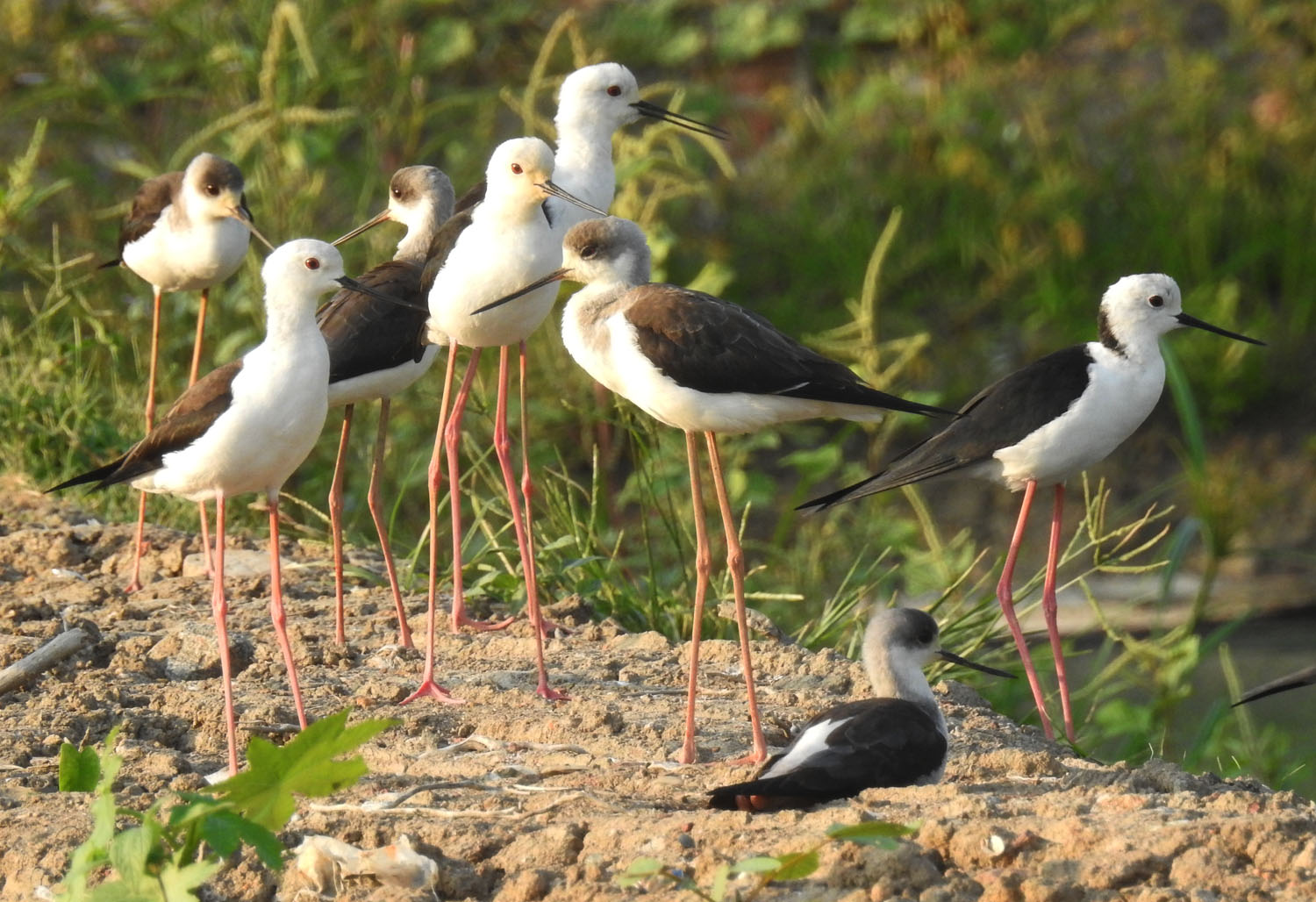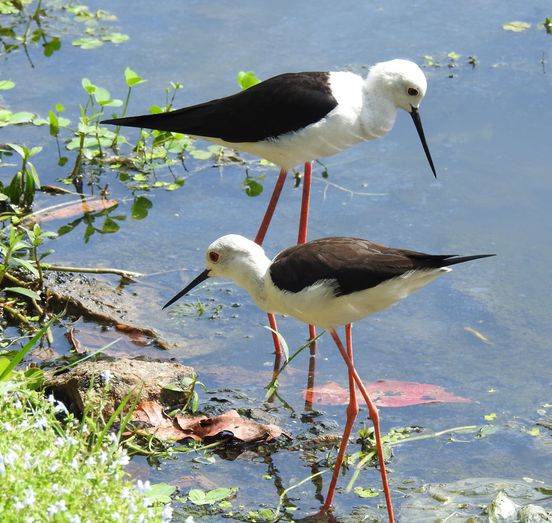The Black-winged Stilt is the only wader found in Sri Lanka which is mentioned in the Guinness Book of Records. This bird holds the record for having the longest legs in relation to the body length of all the birds found in the world, which is about 60% of the total body length.
This
long-billed and long-legged bird is about 38 c.m. (or 15 inches) in length or slightly larger than a Red-wattled Lapwing. The legs are about 21 c.m.( 8 inches) in length. The legs have three front toes but lack a hind toe. The three front toes are webbed partly at the posterior end. The long thin black beak appears straight, but has a slight up-curve. The basic body color of adults is a gleaming white, though some, especially females and juveniles, may show some grey, brown or black color on the hindneck. Eyes are a deep maroon red or dark brown which shows almost as black. Legs and toes are dark pink or pink-red.
The wings of the male are jet black with a blue-green sheen and the wings of females are a dark brown.
The Black-winged Stilt is mainly an inhabitant of the Dry Zone areas of Sri Lanka. However, it can be seen in large numbers in suitable habitats in the Colombo and Gampaha Districts and as scattered flocks in Galle and Matara Districts during the North-East Monsoon period and till April. Sometimes they occur in the Wet Zone areas from July or early August. The occurrence of the Black-winged Stilt in the Wet Zone areas of Sri Lanka was recorded first by Mr. Rex I. de Silva in 1975 and 1976 from the Bellanwila marshes in January and February and these first three records are reported in the Checklist of Birds by late W.W.A.Phillips (1978).Initially it was thought that the birds seen in the Wet Zine are internal migrants but it is now presumed that they are migrants. These Wet Zone birds remain till late April but those that are seen breeding remain throughout. Breeding in the Wet Zone has been recorded intermittently from the last decade.
Breeding could commence from April and extend up to August. They do not construct a nest, and make use of depressions on the ground to lay eggs. It may gather a few pieces of dried vegetable matter to line the nest if these are around, but would lay the eggs on the bare ground if such materials are not found close-by. It is a communal breeder, with several or a large number of birds breeding in close proximity to each other and the areas are often shared with other waders and water birds that breed during the same period of the year.
The usual clutch has four eggs, though some may have only three eggs and an occasional nest having five eggs. The eggs are usually a yellowish-brown or a grey-brown with dark grey, purplish or black spots and blotches. The eggs are of a conical shape due to one end being very narrow and this shape makes the eggs to roll over in a close circle, preventing an egg or more from rolling away from the nest. The eggs are always arranged in the nest to keep the narrow ends close to each other in the middle. During incubation, parents sit on the nest with their long legs bent at knees and placed along the sides of the body.





0 Comments